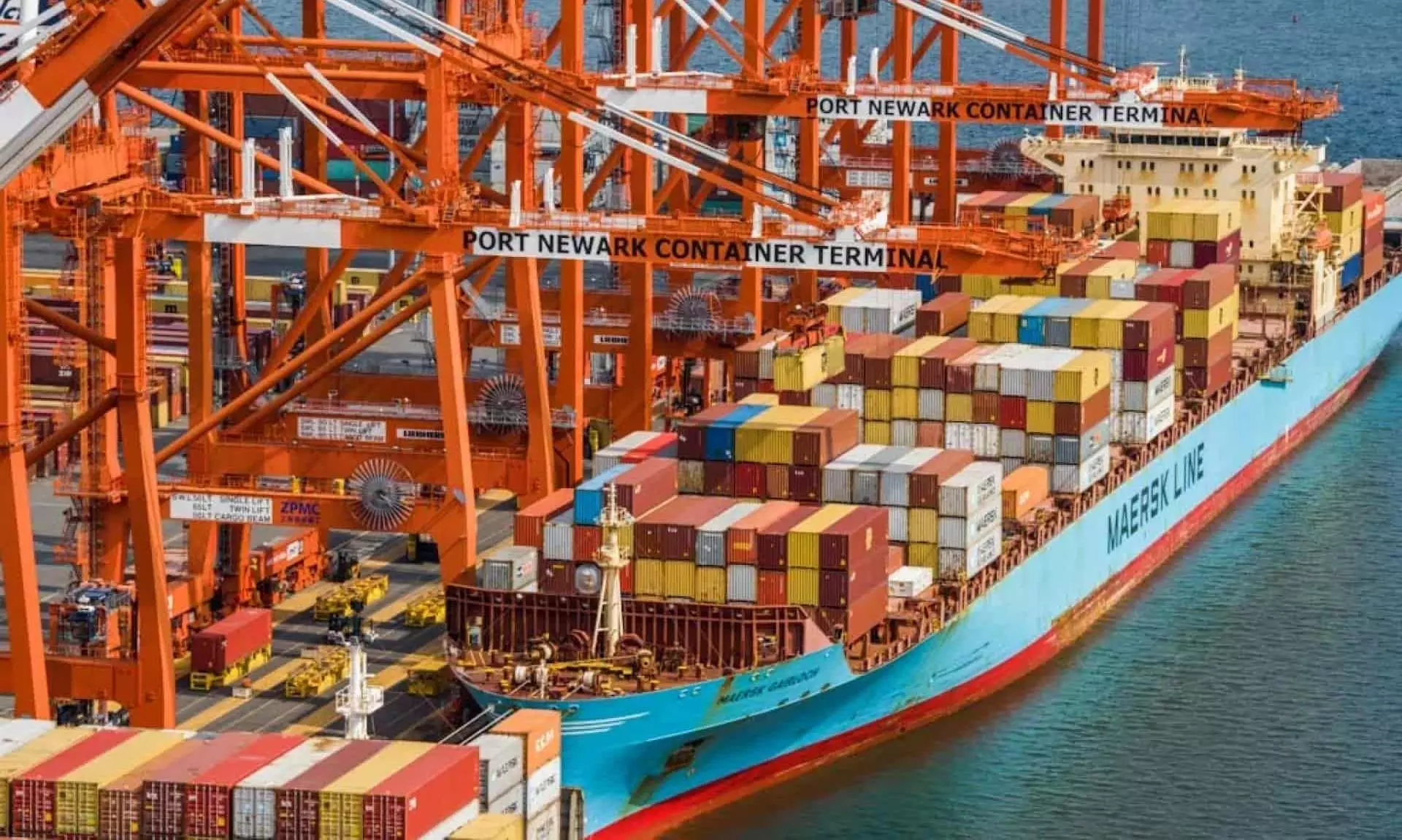Increase in blank sailings to disrupt global shipping: Dimerco
Ocean Alliance will cancel 24 sailings, THE Alliance 16, 2M Alliance 16 and non-alliance carriers 34 sailings.

Photo Credit: Port of New York and New Jersey
Carriers will ramp up blank sailings by over 1.5 times, adding 53 more
cancellations between weeks 38 and 42 compared to the previous five weeks, according to the latest update from Dimerco.
"Drewry's weekly analysis on September 13 reported that 90 blank sailings have been announced out of 692 scheduled, reflecting a 13 percent cancellation rate. The majority of these cancellations (67 percent) are concentrated on the Trans-Pacific Eastbound (TPEB) route, followed by 21 percent on the Asia-Europe/Med routes and 12 percent on the Transatlantic."
Among the alliances, Ocean Alliance will cancel 24 sailings, THE Alliance 16, 2M Alliance 16 and non-alliance carriers 34 sailings, the update added.
Despite obstacles like the rising number of blank sailings, the ongoing Red Sea crisis and potential strikes at U.S. East Coast (USEC) and Gulf Coast ports, ocean freight rates on Europe westbound and TPEB routes continue to drop, with the largest declines — particularly on the USEC — ranging from 15 percent to 27 percent compared to August.
US import cargo continues to rise
Retail sales in the U.S. grew again in August, as did the National Retail Federation's forecast for import cargo, the update added. "Despite a slowing labour market, consumer spending on household essentials remained strong. A 0.45 percent month-over-month increase in total retail sales, according to the Retail Monitor, was driven by optimism surrounding the interest rate cut by the Federal Reserve."
Alvin Fuh, Vice President – Ocean Freight, Dimerco Express Group says: "Concerns about a possible East and Gulf Coast port strike and the fear of rising tariffs after the upcoming Presidential election led many cargo owners to accelerate shipments, pushing port handling volume up by 2.1 percent to 2.37 million TEUs in August. The early peak season suggests an earlier-than-usual start to the slow season, with expected declines in handling volume from September to December, projected at 2.31 million, 2.08 million, 1.92 million, and 1.89 million TEUs, respectively. If these forecasts hold, total port volume for 2024 could reach 24.98 million TEUs, a 12 percent increase from 2023."
Lane report
For Asia to the U.S. East Coast and European base ports, space is in an upturn mode (market is picking up but demand can still be met by current supply) with falling rates.
On the backhaul, space from the U.S. to Asia is tight with rising rates, and space from Europe to Asia is soft with falling rates.
Country status
The demand for exports from Taiwan to the U.S. and Europe continues to decline, the update added. "To stabilise ocean freight rates, carriers plan to implement more blank sailings, preventing rates from falling too sharply.
"Some carriers are offering spot rates as their FAK rates under service contracts remain higher than the current market rates. A mix of FAK and fixed rates is being used by some carriers. This trend is likely to extend into October."
For the U.S. lane from North China, some carriers are offering discount rates and there is one blank sailing for October. "For Europe lane, carriers are lifting the weight limits to receive full cargo amid the falling demand. To Southeast Asia, carriers have started to offer free demurrage and detention days to collect more shipments for early October in order to fill vessels during the National holiday."
From East China, due to the potential strike on the U.S. East Coast, several shippers have adjusted to ship to the U.S. West Coast. In addition, carriers have begun collecting cargo in preparation for the Golden Week in China in order to minimise inventory.
"Despite the West Coast capacity being full, the rate still decreased. There is currently high shipping capacity to Europe with a declining market for cargo volume. Most carriers have lowered their rates to attract more cargo, intensifying competition."
Space is stable from Hong Kong to SE Asia. Port congestion in Malaysia, however, is causing delays of more than three days.
From South Korea, freight rates have decreased due to the summer holiday season, and this downward trend is expected to continue as no significant factors are driving an increase.
"With most cargo to and from China already processed ahead of recent and upcoming holidays, ocean volumes have dropped sharply. Carriers have been unsuccessful in implementing a general rate increase (GRI) and are instead offering special promotional rates on a case-by-case basis.
Ocean carriers have resumed their regular weekly sailing schedules to India. " Carriers have postponed the peak season surcharge (PSS) for U.S. routes from September to October 1."
October marks an increase in export activities in Australia, particularly for agricultural products, which would tighten the ocean export capacity. The upcoming demand has brought an increase to the overall freight rates. There is ongoing port congestion in Sydney and Melbourne, and the delays caused by the port congestion may increase the overall shipping cost, the update added.
In anticipation of a potential coast-wide dockworker strike on the U.S. East and Gulf Coasts on October 1, many importers are shifting cargo to the West Coast and accelerating shipments ahead of the peak season. This shift has contributed to a stronger volume forecast, with a 14 percent increase expected over September 2023. As a result, rates to the East Coast have dropped significantly as importers divert cargo to avoid potential disruptions."
Ocean freight costs between Asia and Mexico are rising again, driven by several factors. Mexican Pacific ports are seeing a surge in container volumes from Asia, particularly with higher demand for EV and auto parts. Shipping lines are reducing fleet capacity by cancelling some voyages, lowering supply and consequently pushing prices, the update added.
Originally published in logupdateafrica



